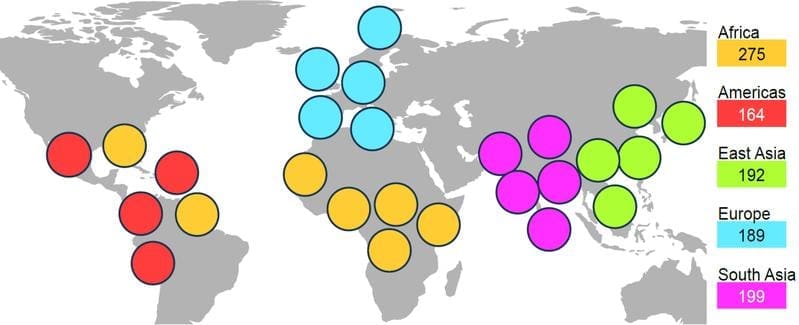Breakthrough in genome research: diversity of the human genome mapped in detail
An international research group led by Prof. Dr. Tobias Marschall from Heinrich Heine University DĂŒsseldorf has re-analyzed the data from the 1000 Genomes Project (2007-2015) using modern sequencing technologies. The results, published in two studies in the journal Nature, show the diversity of the human genome in unprecedented depth.
The Human Genome Project mapped over 90 percent of the human genome in 2003. The 1000 Genome Project then collected data from over 2,500 people from 26 populations on five continents to map genetic diversity. The new analyses used long-read sequencing, which precisely maps longer sections of DNA. This allowed genetic variants, from small base pair differences to structural changes such as deleted or repeated sections, to be identified more accurately. Such variants are crucial for understanding rare genetic diseases.

The first study (Schloissnig, Pani et al.) sequenced 1,019 genomes and expanded the database of the Human Pangenome Reference Project of 2023, which created a reference map of genetic diversity based on 47 individuals. This larger cohort facilitates the study of rare structural variants. The second study (Logsdon, Ebert et al.) focused on the complete sequencing of 65 genomes and reconstructed 1,161 chromosomes without gaps (“telomere-to-telomere”). This provided insights into previously inaccessible sections such as centromeres, which could play a role in immune disorders and cancer.
The studies, which involved world-renowned institutions such as EMBL Heidelberg, the University of Washington and the Research Institute of Molecular Pathology Vienna, create a freely accessible resource for global research. Prof. Marschall emphasizes that the results open up new perspectives for research into the genetic causes of disease. The data sets are available to researchers worldwide and mark a milestone in genome research.
Original Paper:
Structural variation in 1,019 diverse humans based on long-read sequencing | Nature
Read also:
Genome sequencing and EHDS: TMF drives sustainable use of health data – MedLabPortal
Editorial office: X-Press JournalistenbĂŒro GbR
Gender note. The personal designations used in this text always refer equally to female, male and diverse persons. Double/triple references and gendered designations are avoided in favor of better readability.




